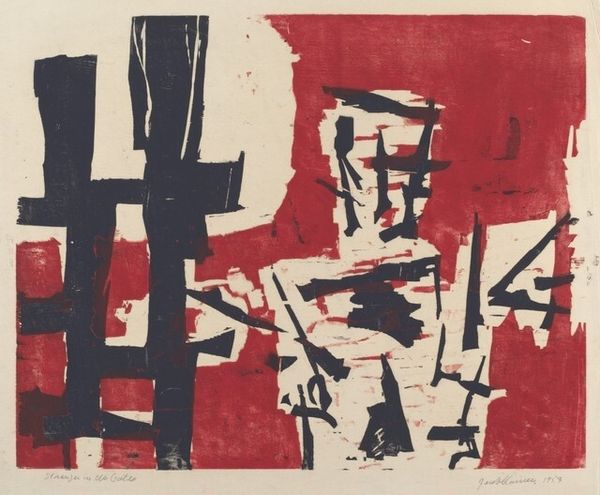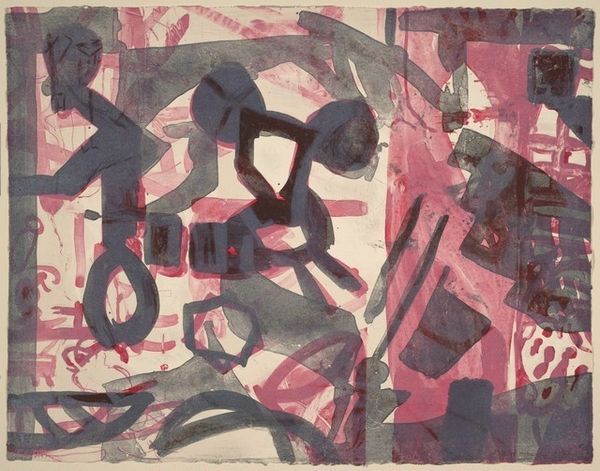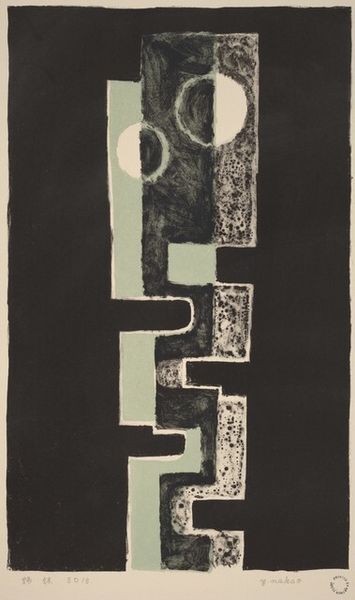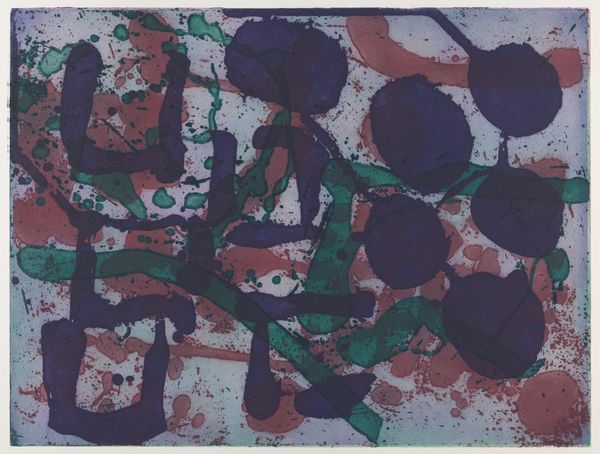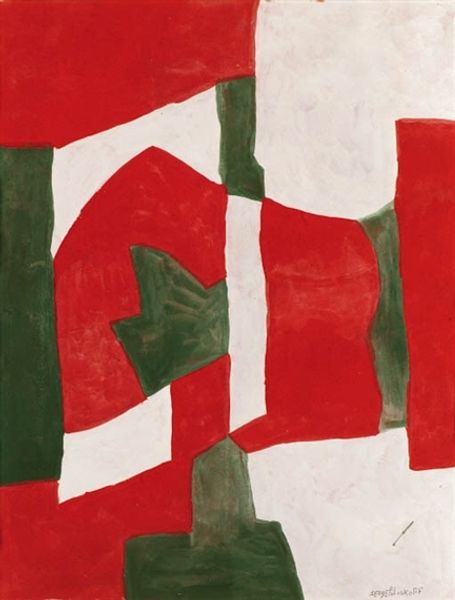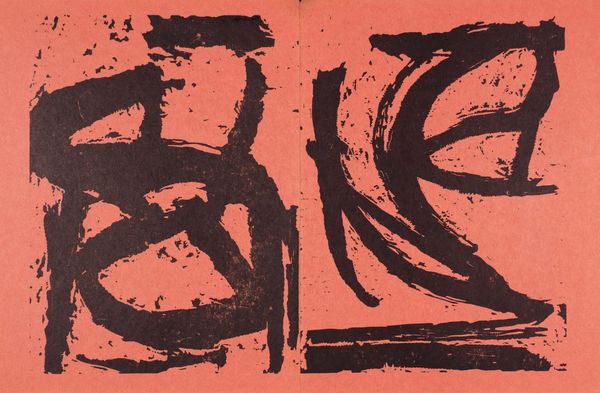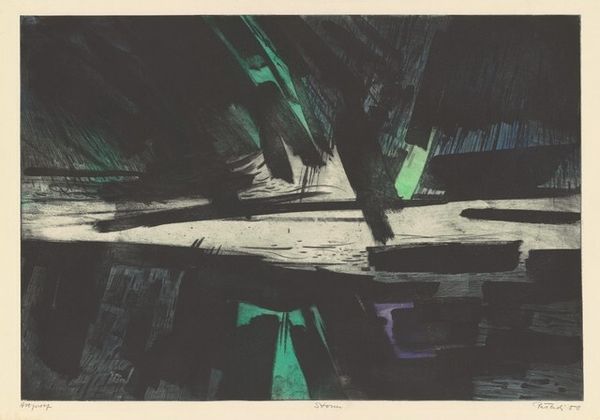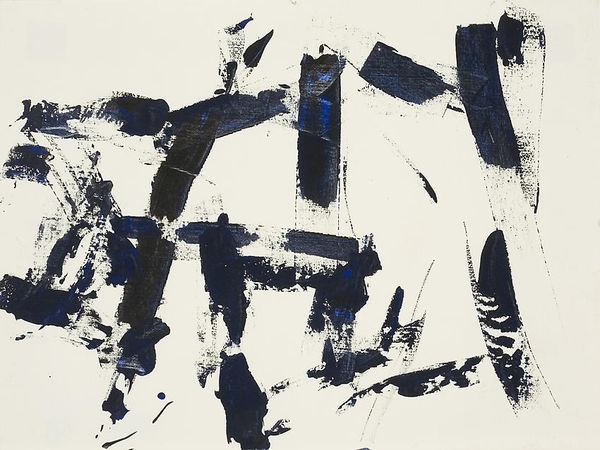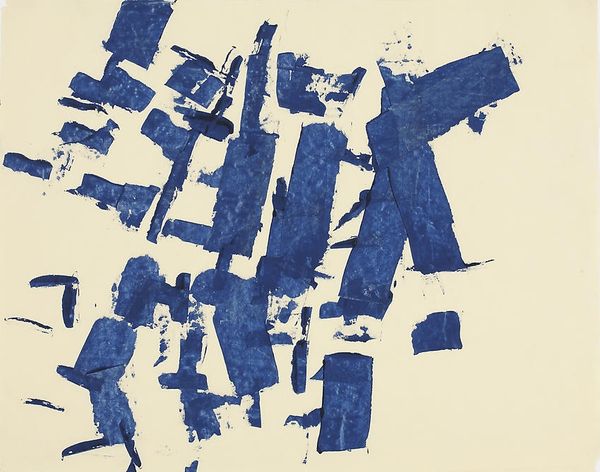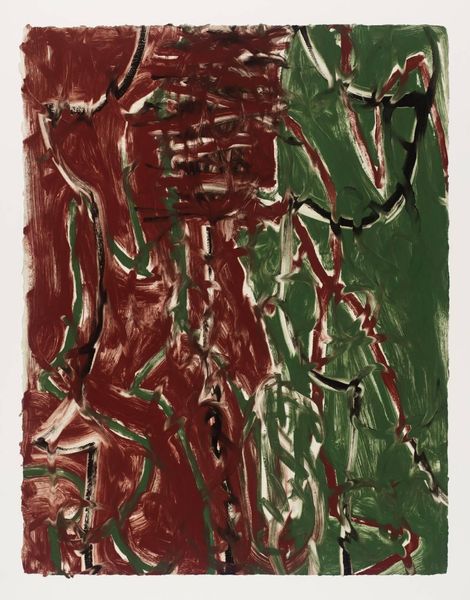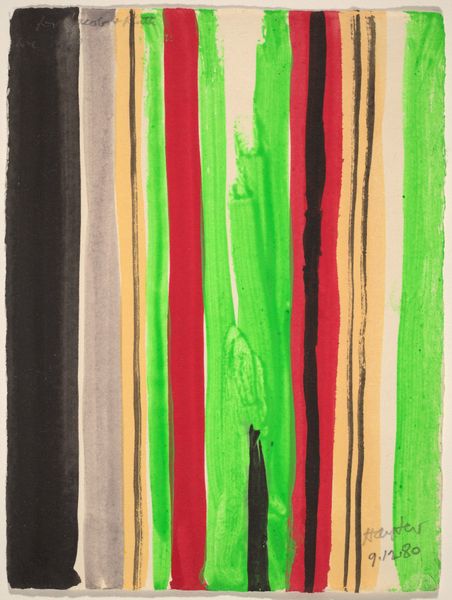
print, woodcut
#
abstract-expressionism
# print
#
figuration
#
woodcut
Dimensions: image: 42.6 x 53.7 cm (16 3/4 x 21 1/8 in.) sheet: 51.9 x 60.9 cm (20 7/16 x 24 in.)
Copyright: National Gallery of Art: CC0 1.0
Curator: So, here we have Jacob Kainen's woodcut from 1953, "Stranger in the Gates." The work is decidedly abstract, though clearly referencing figuration, rendered with bold lines and an intriguing color palette. Editor: My first impression? Claustrophobia! The green presses in, that grid looms...it feels like a confrontation, doesn't it? Even the human form is sliced and diced, not inviting at all. Curator: That sensation aligns with Kainen's wider explorations, particularly around alienation and social exclusion after the Second World War. This period marked a surge in abstract expressionism. Editor: It makes you wonder who is locked out, or locking someone else out. And why all the blocks? There is this white, misty moon and otherwise there is no softening—all just rectangles pushing against each other. Curator: The gate-like structure, composed of strong horizontal and vertical elements, echoes similar imagery used in postwar existentialist literature and art. Think of the Cold War divisions and the Red Scare here in the USA. It all reverberates. Editor: Totally, it screams division. The fragmented figure could be anybody, and the crude print method just heightens the emotional charge, gives it this raw immediacy. Curator: Precisely! Woodcut allows for such directness, eschewing finesse in favor of stark impact. Kainen’s use of line here creates a sense of urgency, even anxiety, evoking psychological tension and sociopolitical discomfort. We get these layers from art history and social reflection… Editor: Exactly! It has this lasting feeling... a feeling you can't escape from.
Comments
No comments
Be the first to comment and join the conversation on the ultimate creative platform.
